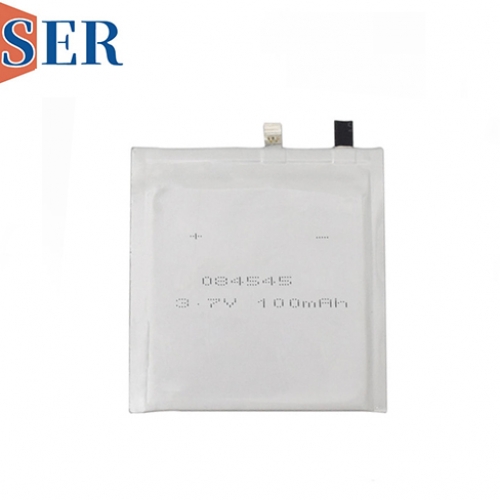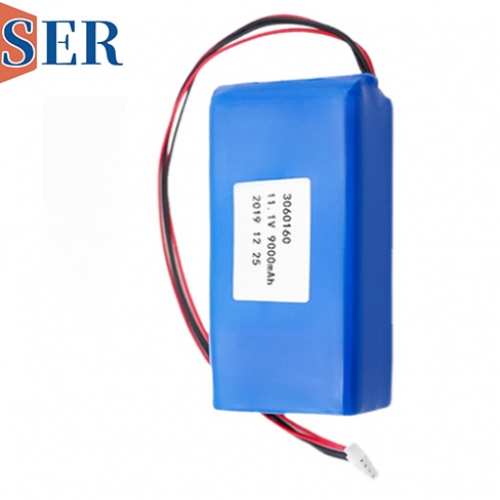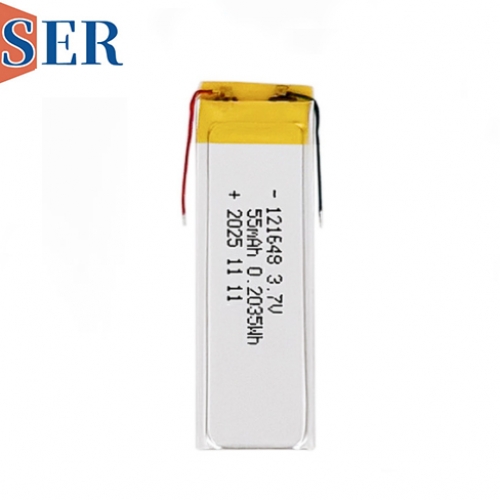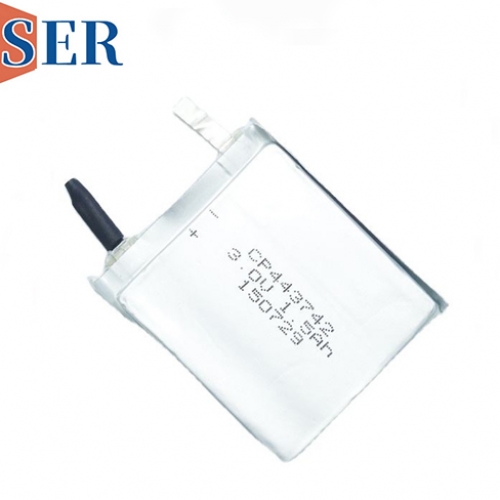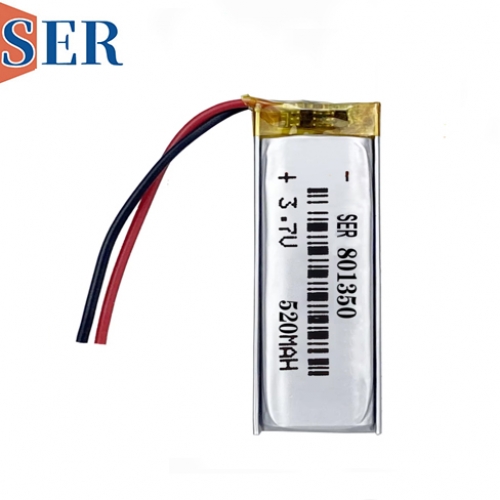Rechargeable High-Temperature Batteries: Powering Resilience in Extreme Environments
Rechargeable High-Temperature Batteries: Powering Resilience in Extreme Environments

In the modern world, where technology permeates every aspect of life—from outdoor infrastructure to automotive systems—reliability in extreme conditions has become a non-negotiable requirement. Among the most critical challenges faced by engineers and developers is ensuring consistent power supply in high-temperature environments. Traditional batteries, designed for moderate climates, often falter when exposed to sustained heat, leading to reduced capacity, shortened lifespans, and even safety hazards. This is where rechargeable high-temperature batteries emerge as a transformative solution.
SER, a pioneer in advanced energy storage solutions, has developed a line of rechargeable high-temperature batteries engineered to thrive in harsh thermal conditions. With a nominal voltage of 3.7V, customizable capacity and size, and the ability to operate reliably above 60°C, these batteries are redefining performance standards for applications in outdoor settings, road infrastructure, automotive interiors, and beyond. This article explores the technology behind SER’s high-temperature batteries, their core advantages, real-world applications, and their role in enabling innovation in extreme environments.
1. The Challenge of High-Temperature Environments: Why Standard Batteries Fail
Temperature is one of the most significant factors influencing battery performance. All electrochemical cells rely on chemical reactions to generate and store energy, and these reactions are highly temperature-sensitive. While moderate heat can accelerate reaction rates (temporarily boosting performance), sustained exposure to high temperatures—typically above 45°C for standard batteries—triggers a cascade of detrimental effects:
These limitations pose significant challenges for industries operating in high-temperature environments. Outdoor electronics, such as solar-powered sensors and weather stations, are exposed to direct sunlight, with ambient temperatures often exceeding 60°C in regions like deserts or tropical climates. Automotive systems, including in-vehicle sensors, infotainment devices, and electric vehicle (EV) auxiliary power units, must withstand the heat generated by engines and direct sunlight, where cabin temperatures can reach 70°C or higher. Road infrastructure, such as traffic management sensors and toll booth equipment, faces similar thermal stress.
In such scenarios, standard batteries are not just inefficient—they are unreliable. This gap in the market is precisely what SER’s rechargeable high-temperature batteries are designed to fill.
2. SER’s Rechargeable High-Temperature Batteries: Technology and Design
SER’s high-temperature batteries are the result of years of research into materials science, electrochemistry, and thermal engineering. Built around a 3.7V nominal voltage platform—a standard in portable electronics and IoT devices—these batteries incorporate several innovations to ensure stability and performance in extreme heat.
Core Technical Specifications
Key Technological Innovations
The performance of SER’s high-temperature batteries stems from three core innovations:
Together, these innovations enable SER’s batteries to maintain voltage stability, retain capacity, and resist degradation in environments where standard batteries would fail.
3. Core Advantages: Why SER’s High-Temperature Batteries Stand Out
SER’s rechargeable high-temperature batteries offer a suite of advantages that make them indispensable for extreme environment applications. These benefits extend beyond mere heat resistance, addressing reliability, cost, and versatility.
1. Unmatched Thermal Stability
The most defining feature of these batteries is their ability to operate above 60°C without compromising performance. In third-party testing, SER’s 3.7V, 2000mAh battery maintained 85% of its initial capacity after 500 cycles at 70°C—compared to a standard Li-ion battery, which retained just 40% capacity under the same conditions. This stability ensures that devices remain operational even during heatwaves, engine operation, or prolonged sunlight exposure.
2. Customization for Diverse Applications
Every high-temperature application has unique requirements, and SER’s batteries are designed to adapt. Whether a customer needs a thin, 500mAh pouch battery for a wearable industrial sensor or a 10,000mAh prismatic battery for a road-side weather station, SER can tailor capacity, size, and form factor to fit. This customization eliminates the need for costly device redesigns to accommodate off-the-shelf batteries, accelerating time-to-market for new products.
3. Long Cycle Life and Reduced Maintenance
In high-temperature environments, frequent battery replacements are not just inconvenient—they are often costly and dangerous. For example, replacing a battery in a solar-powered traffic sensor mounted on a highway requires road closures and specialized crews. SER’s batteries, with their 500–1,000 cycle life at 60°C, reduce replacement frequency by 50% or more, lowering labor costs and minimizing downtime.
4. Enhanced Safety Features
Safety is paramount in high-heat applications, and SER’s batteries incorporate multiple safeguards:
These features make SER’s batteries suitable for use in enclosed spaces, such as automotive cabins, where safety risks are magnified.
5. Compatibility with Existing Systems
SER’s batteries operate at a nominal 3.7V, matching the voltage of most standard Li-ion batteries. This means they can be integrated into existing devices without modifying charging systems or power management hardware. For manufacturers, this compatibility reduces the cost and complexity of upgrading to high-temperature solutions.
4. Applications: Powering Critical Systems in Extreme Heat
SER’s rechargeable high-temperature batteries are transforming industries that operate in harsh thermal environments. From outdoor infrastructure to automotive technology, these batteries ensure that critical systems remain powered, reliable, and safe.
1. Outdoor and Environmental Monitoring
Outdoor electronics face some of the most extreme temperature fluctuations, from freezing nights to scorching days. SER’s batteries are ideal for powering:
2. Automotive and Transportation
The automotive industry is a key beneficiary of high-temperature battery technology. Modern vehicles, whether internal combustion engine (ICE) or electric, generate significant heat, particularly in engine bays, underhood compartments, and dashboards. SER’s batteries power a range of automotive systems:
3. Road and Infrastructure Management
Roads, highways, and urban infrastructure are equipped with an array of electronic devices that must withstand extreme heat. SER’s batteries ensure these systems operate reliably:
4. Industrial and Manufacturing Settings
Industrial environments, such as factories, refineries, and power plants, often have high ambient temperatures due to machinery operation. SER’s batteries power:
5. Sustainability and Environmental Impact
In addition to performance, SER is committed to ensuring its high-temperature batteries are environmentally responsible. The rechargeable design reduces reliance on single-use primary batteries, which contribute to e-waste. SER’s batteries are also engineered for recyclability:
These efforts align with global sustainability goals, making SER’s high-temperature batteries a responsible choice for eco-conscious industries.
6. Future Developments: Pushing the Boundaries of High-Temperature Performance
SER continues to invest in research and development to enhance its high-temperature battery technology. Key areas of innovation include:
These advancements will further expand the applications of SER’s batteries, enabling innovation in sectors where extreme heat has historically limited technological progress.
7. Conclusion: Powering Confidence in Extreme Environments
In a world where technology is increasingly deployed in challenging conditions, the need for reliable, high-performance energy storage has never been greater. SER’s rechargeable high-temperature batteries—with their 3.7V nominal voltage, customizable design, and ability to operate above 60°C—are meeting this need head-on.
By combining advanced materials science, robust engineering, and a focus on customization, these batteries are enabling breakthroughs in outdoor monitoring, automotive systems, infrastructure management, and industrial settings. They not only solve the practical challenges of high-temperature operation but also reduce costs, enhance safety, and support sustainability.
As industries continue to push the boundaries of where technology can operate—from the hottest deserts to the busiest urban centers—SER’s high-temperature batteries will remain a critical partner, ensuring that power is never compromised, even in the most extreme environments. In doing so, they are not just powering devices—they are powering progress.

